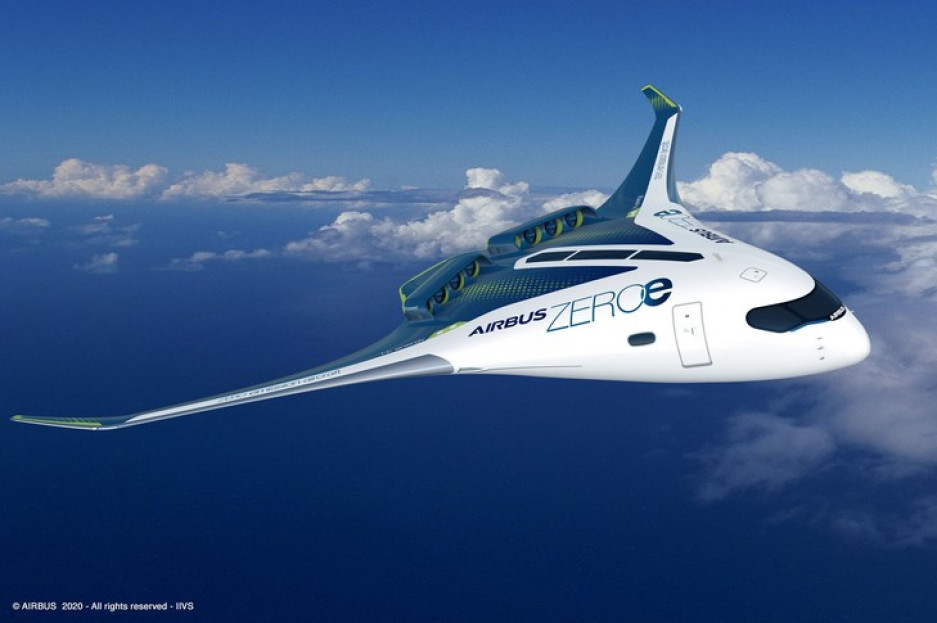
Positive Mobility
eMagIs hydrogen the aviation fuel of the future?

Electrical energy, bio-fuels, eco-flying, lightweight aircraft bodies: the aviation industry is awash with ideas and projects to move us nearer to the zero-carbon aircraft. Using hydrogen as a fuel is a solution that holds out much promise, but one that brings with it many significant hurdles for aircraft manufacturers and airport operators.
In recent years, national conversations have turned to issues surrounding the transport sector’s ecological footprint. It is an area witnessing a raft of innovations from a wide range of actors. The quest for responsible and fuel-efficient solutions is one of the biggest hurdles, with the focus often on the need to reduce dependency on fossil fuels, jet fuel in particular. Aviation, which currently accounts for 3% of global CO2 emissions, is leading the way. On the ground, via the Zero Net Emission targets that members of the Airports Council International have signed up to, and in the air with the race to deliver green innovations ushering in an new era of sustainable aircraft. It is race where hydrogen is among the frontrunners.
Aircraft in the hydrogen age
2019 saw the first hydrogen-powered buses in an around Paris, a city already home to a fleet of hydrogen-powered taxis. National rail operator SNCF hopes that hydrogen-powered trains will be manufactured as early as 2022. The marine industry is also backing hydrogen as a new fuel source. As the most abundant element in the universe, hydrogen atoms are a feature of pretty much every project for sustainable CO2-neutral transport.
Sights set on 2035
Aviation too is attracted by the possibilities that hydrogen offer. In France, the plan to support the aviation industry, announced by the government in June 2020, set a goal of having a hydrogen-powered plane in the air within 15 years. The plan unveiled in September features €7.2bn invested over ten years, including €2bn over the next two years, to kick-start development of a new hydrogen industry.
The industrial challenges are considerable, reflecting the disruptive nature of the technology: certainly a greater step-change than in the years after WW2, which saw the arrival of jet engines and pressurised passenger cabins. This week saw Airbus announce three projects for zero-emission hydrogen-powered aircraft. This multi-billion euro programme hopes to see the first prototypes flying in 2028, with commercial medium-haul flights starting in 2035.
With all the advantages it offers – particularly the ability to store electricity over lengthy periods with zero CO2 emissions – hydrogen looks set to be a green fuel with a great future. In the coming years, there is every chance that it will help to drive down carbon emissions from manufacturing industry and transport. But how will it work in an aircraft?
Two technology pathways, multiple challenges
There are two possible solutions for making hydrogen-powered flight a reality. The first solution, an on-board fuel cell producing electricity from hydrogen, could be used for short flights by small aircraft. The second, more promising, can power medium-haul aircraft using hydrogen directly as fuel for turbofan engines. However, hydrogen has to be stored as a liquid on board, in cryogenic tanks at temperatures of -253°C, which will involve far-reaching changes to aircraft layouts.
(Re-)inventing a supply chain
Even before issues such as these are solved, there is a need to re-invent the entire upstream production system. Currently, almost all hydrogen is produced from fossil fuels. France produces some 900,000 metric tons a year, resulting in an abysmal carbon footprint that sees the annual emission of 13.5 million metric tons of CO2. The industry needs to quickly and massively move to a green carbon-free model for hydrogen, based on the use of renewables. Finance is a further factor: it currently costs five times as much to manufacture ‘green’ hydrogen as it does to produce it from fossil fuels.
And then there are questions of logistics and supply chains. With the entire logistics circuit, refinery to runway, currently configured for jet fuel, the complete process will have to be re-engineered for hydrogen. Certainly major adaptations will be needed, particularly at the world’s 40,000 airports. Radical re-thinks of infrastructures will be required to safely incorporate installations for producing, storing and distributing environmentally-friendly hydrogen, while maintaining the ability to supply jet fuel and hydrogen side by side during a lengthy transition period, bearing in mind that current fleets have a many years’ flying time left in them.
It’s a challenge that VINCI Airports, one of the world’s leading airport operators, is already working on, in partnership with major companies such as Airbus, examining the changes needed at its airports around the world to enable them to welcome and support the widespread deployment of this disruptive technology at every VINCI airport.
There’s no doubt the hydrogen era will be taking off soon!